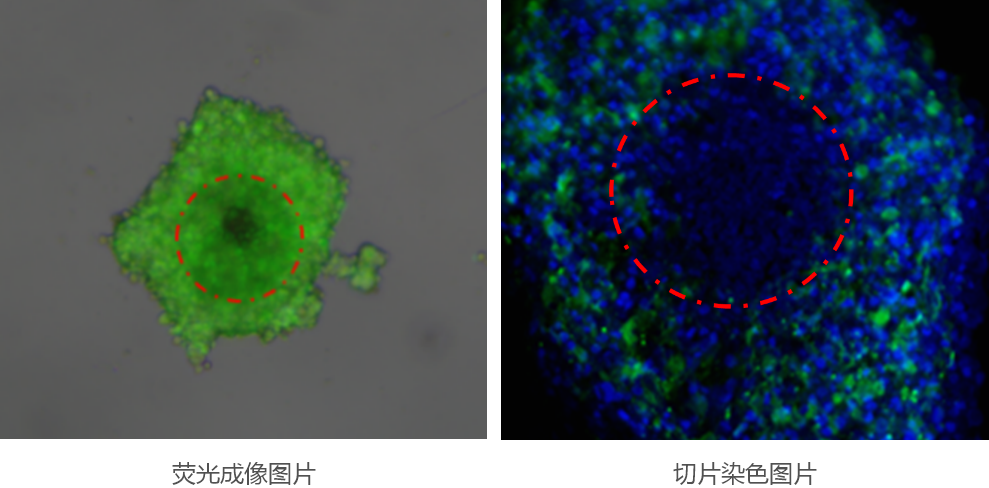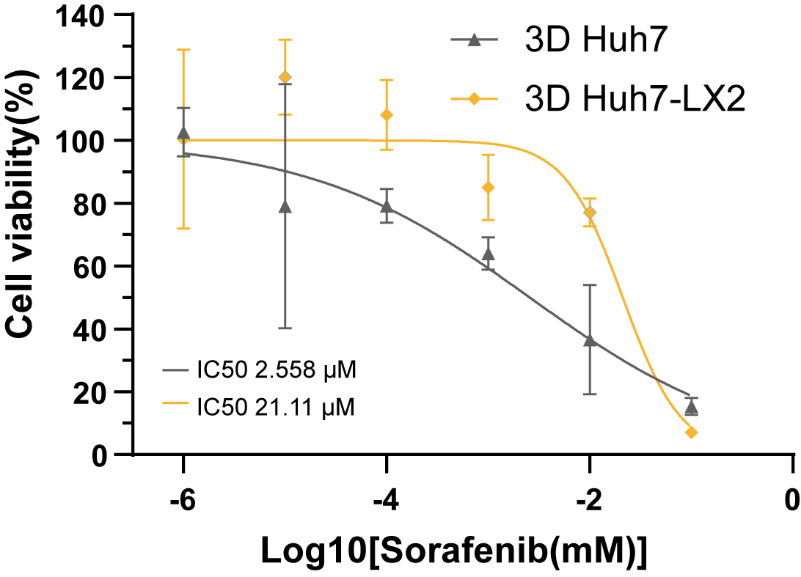Room 810, 8F, No. 780, Cailun Road, Pudong New Area, Shanghai, China.
Drug efficacy testing
The modular 3D models prepared using NAC-Organ technology exhibit high uniformity and repeatability.
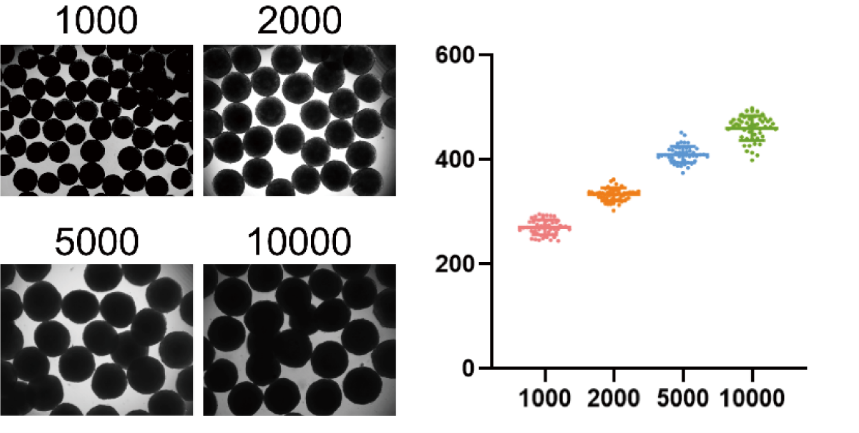
Application 1: Pharmacodynamic testing using 3D tumor models
In the tumor model constructed using the Huh7 cell line, after treatment with sorafenib for 24 hours, the 3D NAC-Organ tumor demonstrated higher drug resistance compared to the tumor cells cultured in 2D. The IC50 value of the 3D model was found to be twice that of the 2D model.

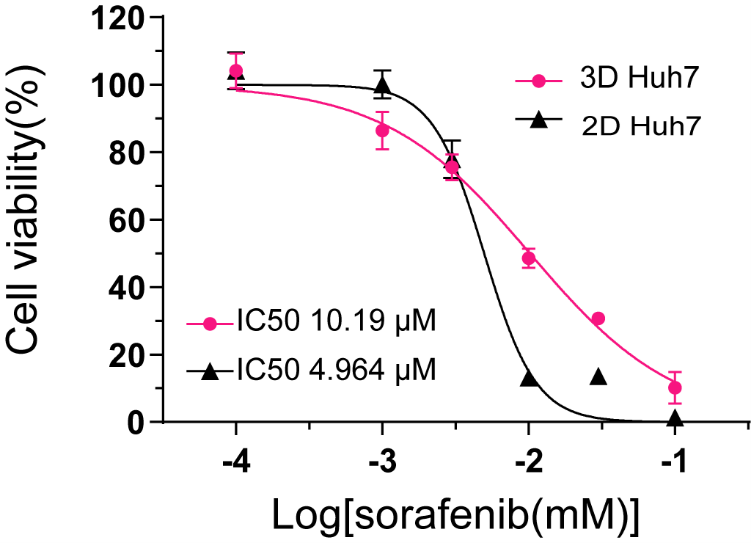
Application 2: Pharmacodynamic testing using 3D immune models
The 3D liver immune microenvironment model was constructed by assembling hepatocytes, non-parenchymal cells, and immune cells (red representing T cells, green representing macrophages). In this model, the introduction of immune cells was found to attenuate acetaminophen-induced liver cell damage and provide protection to hepatocytes.

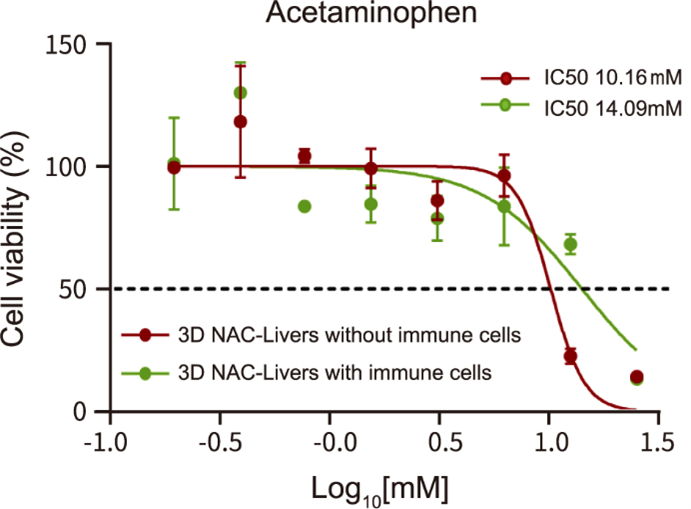
The 3D tumor + CAF model constructed using NAC-Organ technology allows close contact between CAF cells (green) and the tumor model (red circle), forming a physical barrier at the periphery. Compared to the 3D tumor model cultured alone, this model exhibits higher drug resistance, with an IC50 value ten times higher.
